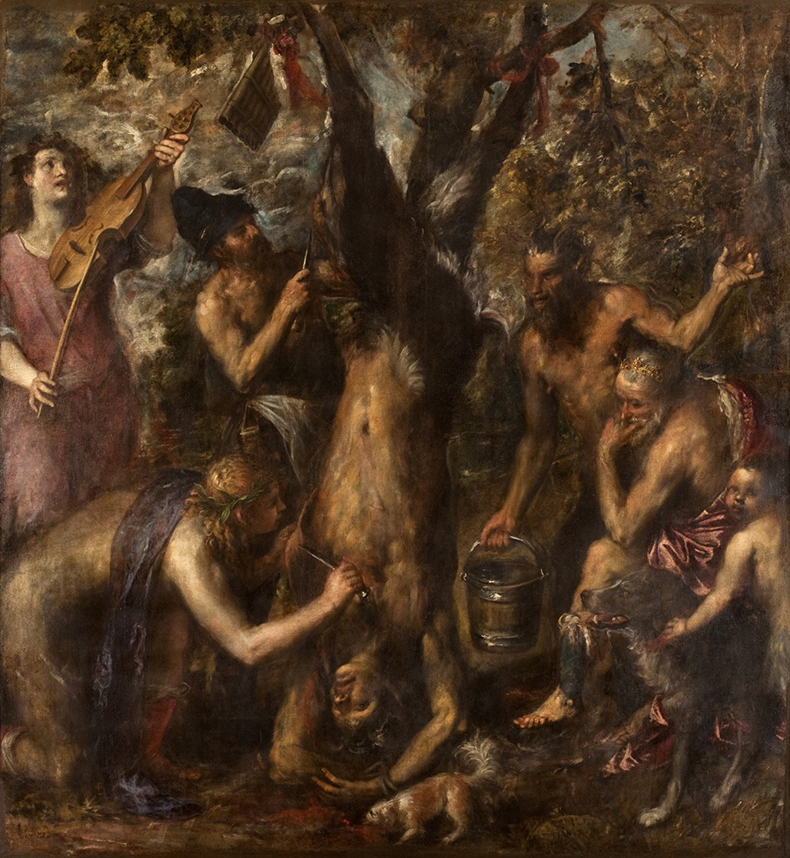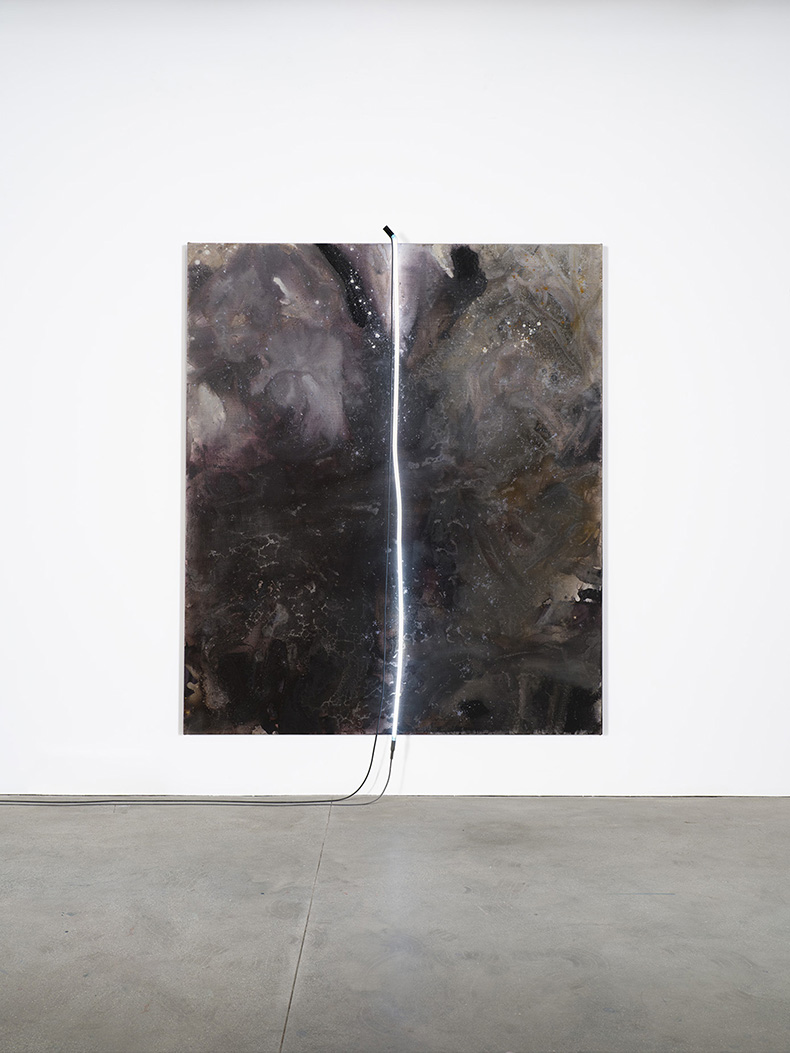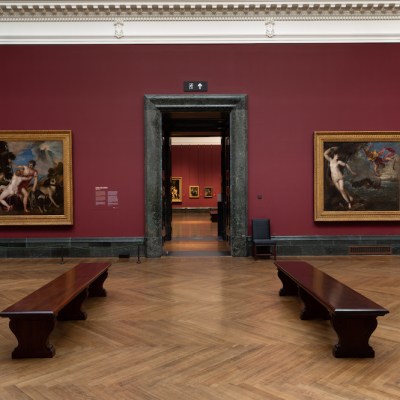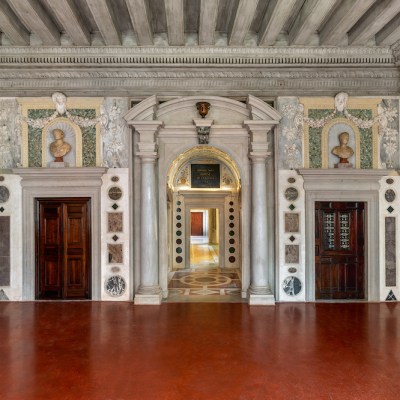In the Scuderie del Quirinale in Rome, in the summer of 2013, the Californian painter Mary Weatherford encountered Titian’s haunting late work The Flaying of Marsyas and she knew that someday she would paint something in response. The painting, which is normally to be found in the Czech town of Kromeriz, depicts the myth of the satyr who challenged Apollo to a flute-playing competition and was flayed by the god for his hubris. It’s almost Impressionistic in its rough brushwork and yet almost too carefully composed. Along with Icarus, the healer Aesculapius (who incurred Apollo’s wrath for trying to bring a patient back to life), and Bellerophon (who tried to ride Pegasus to Olympus), the myth of Marsyas is one of antiquity’s most direct reflections on what happens when humans push the limits of craft, when artists push art too far. Titian, who was more than 80 when he made the painting, would not have taken it lightly.
The Flaying of Marsyas (c. 1570–76), Titian. Archbishop’s Palace, Kromeriz

In the first locked-down months of 2021, Weatherford produced a series of 11 paintings in response to the Titian, ranging in size from a large coffee-table book to nearly a billboard. The linen canvases, hung across the several rooms of the top floor of the Palazzo Grimani, are dark abstractions that recall clouds of star dust in deep space, or the moving light fields that emerge from the darkness you close your eyes.
Weatherford sponged – and, it seems, dripped, and perhaps also layered with brush or spatula – vinyl flashe paint in Titian’s dark, earthy colours on to linen canvases prepared with a subtly sparking underlayer of white gesso and marble dust. Though intuitive and unshowy, Weatherford’s deconstruction and reimagination of The Flaying of Marsyas shares some of the ambivalent energy that charges the painting of the Venetian master. The unsettled fluidity of Weatherford’s canvases makes me think of Goya’s dog, swimming against the wave.
The Flaying of Marsyas – Natural White and Satin (2021–22), Mary Weatherford. Courtesy Gagosian; © the artist

Nine of the works are illuminated with lengths of neon lighting of subtly different colours, wired by hand to small mounts fixed to the canvas; long black wires drape from either end, sometimes crossing over the painting itself – as if Weatherford doesn’t want you to forget that these bright lights are a manmade wonder, a distinctly earthly manifestation of the divine. The neon – one of Weatherford’s most recognisable signatures – makes the marble dust on the canvas sparkle with a magical energy. The curators suggest that this shimmering effect nods to the ineffable warmth of the light in this city of reflections (and neon, seen in this context, does seem closer to Venice than Vegas). But if these paintings have anything to do with Venice, their cyborg quality speaks rather to the sheer technical audacity of the city itself, whose beauty was engineered from the bottom up.
‘Mary Weatherford: The Flaying of Marsyas’ is at the Museo di Palazzo Grimani, Venice until 27 November.



